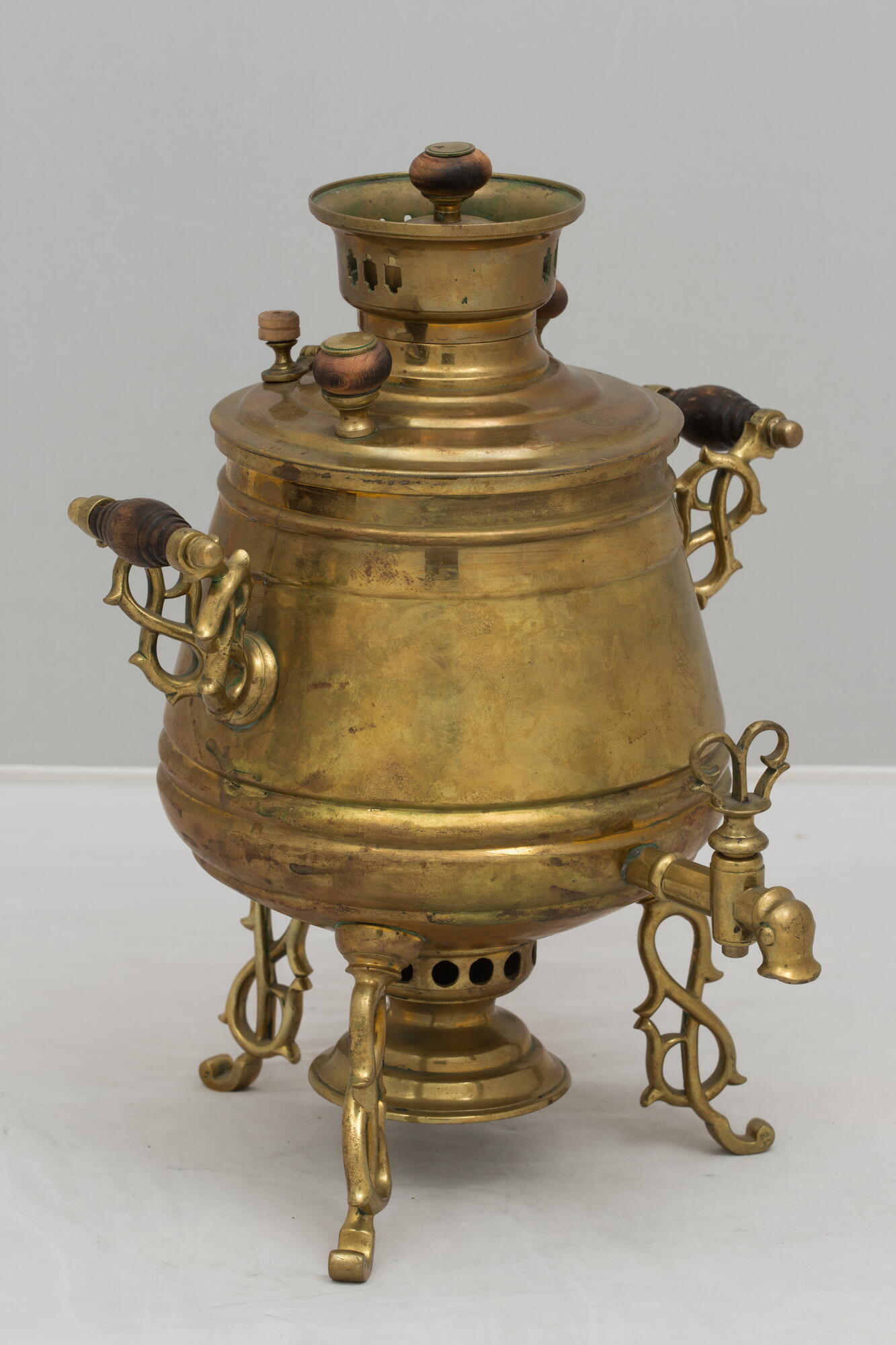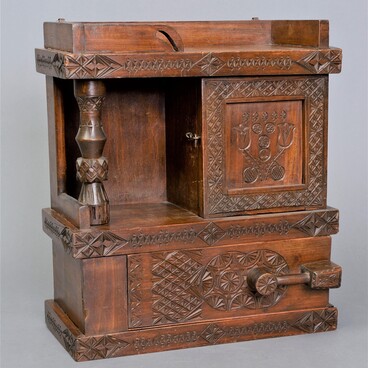The homeland of the samovar is the Urals, namely the Irginsky plant in the Sverdlovsk region. A 16-pound copper samovar made there was first mentioned in documents from 1740.
By the end of the 19th and the beginning of the 20th century, tea drinking in Russia had become an integral part of the national cultural tradition. The plot of drinking tea with a samovar has become one of the popular topics of Russian art, especially folk art. Scenes of tea drinking were depicted on trays, distaffs, tea caddies, wooden and birch bark boxes. The samovar began to appear in numerous works of Russian genre painting. For example, Boris Kustodiev created a whole series of works depicting tea drinking with the samovar: ‘On the terrace’, ‘Tea drinking’, ‘Merchant’s wife at tea’, “Autumn in the province. Tea drinking” and others. Other famous paintings include the works of Vasily Perov “Tea drinking in Mytishchi, near Moscow”, Konstantin Korovin’s ‘At the tea table’, Konstantin Makovsky’s “At tea” and so on.
Each city developed its own traditions of tea drinking. Moscow ones dominated the scene. The writer Alexander Vyurkov wrote: “Muscovites drank tea in the morning, at noon and always at four o”clock. In these hours samovars were boiling in every Moscow house. Teahouses and taverns were full, and life froze for a while. People drank it in the evening; people drank when they felt sad; drank from boredom and “just for nothing.” People drank it with milk, lemon, jam, and most importantly — with pleasure, and the Muscovite loved strong, infusing and hot tea, so that his lips burned. The Muscovite delicately refused liquid tea “through which Moscow can be seen”.
Throughout the history of the development of the samovar, its appearance and decoration have changed in accordance with the waves of public taste. Each factory tried to come up with its own samovar, unlike the others. They were made in different sizes — from a glass to twenty liters, in different shapes — conical, smooth, faceted, in the shape of a ball. At the turn of the 18th — 19th centuries, samovars in the shape of a barrel came into use — this is exactly what is presented in our exposition.
Tula became the largest samovar production center in the middle of the 19th century. The most famous are samovars from the Batashevs' factory. Samples for the convenience of mass production were standardized but decorated with a variety of molded figured parts: cranes, crane branches, handles of various configurations. When decorating samovars, ornamental motifs in the Russian style and floral ornaments in the fashionable manner of “romantic Art Nouveau” were popular.
By the end of the 19th and the beginning of the 20th century, tea drinking in Russia had become an integral part of the national cultural tradition. The plot of drinking tea with a samovar has become one of the popular topics of Russian art, especially folk art. Scenes of tea drinking were depicted on trays, distaffs, tea caddies, wooden and birch bark boxes. The samovar began to appear in numerous works of Russian genre painting. For example, Boris Kustodiev created a whole series of works depicting tea drinking with the samovar: ‘On the terrace’, ‘Tea drinking’, ‘Merchant’s wife at tea’, “Autumn in the province. Tea drinking” and others. Other famous paintings include the works of Vasily Perov “Tea drinking in Mytishchi, near Moscow”, Konstantin Korovin’s ‘At the tea table’, Konstantin Makovsky’s “At tea” and so on.
Each city developed its own traditions of tea drinking. Moscow ones dominated the scene. The writer Alexander Vyurkov wrote: “Muscovites drank tea in the morning, at noon and always at four o”clock. In these hours samovars were boiling in every Moscow house. Teahouses and taverns were full, and life froze for a while. People drank it in the evening; people drank when they felt sad; drank from boredom and “just for nothing.” People drank it with milk, lemon, jam, and most importantly — with pleasure, and the Muscovite loved strong, infusing and hot tea, so that his lips burned. The Muscovite delicately refused liquid tea “through which Moscow can be seen”.
Throughout the history of the development of the samovar, its appearance and decoration have changed in accordance with the waves of public taste. Each factory tried to come up with its own samovar, unlike the others. They were made in different sizes — from a glass to twenty liters, in different shapes — conical, smooth, faceted, in the shape of a ball. At the turn of the 18th — 19th centuries, samovars in the shape of a barrel came into use — this is exactly what is presented in our exposition.
Tula became the largest samovar production center in the middle of the 19th century. The most famous are samovars from the Batashevs' factory. Samples for the convenience of mass production were standardized but decorated with a variety of molded figured parts: cranes, crane branches, handles of various configurations. When decorating samovars, ornamental motifs in the Russian style and floral ornaments in the fashionable manner of “romantic Art Nouveau” were popular.



